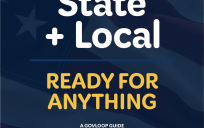The Organization of American States (OAS, or, as it is known in the three other official languages, OEA) is an international organization, headquartered in Washington, D.C.. Its members are the thirty-five independent states of the Americas, although Honduras was suspended as a result of the June 28, 2009 coup d’état that expelled President Manuel Zelaya from office.
Simón Bolívar envisioned a league of American republics in 1826. For a man who once wrote, “Among the popular and representative systems of government I do not approve of the federal system: it is too perfect; and it requires virtues and political talents much superior to our own, “ he’d no doubt be impressed with the way the Organization of American States is moving into a bi-lingual, collaborative, 2.0 phase of existence.
of American
States, is the highest level political gathering that brings together the current 34
democratically elected Heads of State and Governments, and a broad representation of stakeholders in the Western Hemisphere. The goal is to discuss common policy issues, affirm shared values, and to
commit to and follow up on concerted actions related to summit declarations at the national and regional level.
2010 marked a sharp move into the Gov 2.0 space for the OAS with the launch of the Summits Virtual Community (SVC) to serve the Summit of the Americas. The Drupal-based, bilingual online platform, which was developed by Oakton, Virginia based Bixal, was launched in June of 2010.
In the past, individuals and organizations had to travel to in-person meetings to participate in the important process of defining regional priorities and mandates on topics of vital interest. The new Summits Virtual Community allows individuals throughout Latin America, the U.S., and Canada to participate in these important efforts online, hand in hand with their governments. In addition to increasing the number of participants and organizations in the process, the SVC will provide a platform for networking and collaboration on follow up efforts to see that Summit mandates are acted on by all participants in the process.
features, with heavy use of multi-lingual localization, which will facilitate the incorporation of additional languages, specifically Portuguese and French, as will be required in the future. At the time of this writing, the platform allows for full participation by both English and Spanish preferring audiences through separate language forums.
To promote community and collaboration, both individuals and organizations are able to create profiles in English and Spanish. A private messaging functionality allows members, if they choose to be contacted, to reach out to others without exposing members’ contact info. Site administrators and forum and group moderators are able to cross post content to relevant communities making custom audience targetting easy. Additionally, bilingual users who want to follow discussions in both languages can toggle from the group in one language to the other with the click of a button.
The OAS Summits Virtual Community, while a first step, is certainly laying a cornerstone for future multilingual diplomatic efforts in an engaging 2.0 format.




Thank you so much for this post Tanya!
This has been a long process and it’s finally here and ready! We are coordinating our efforts with the Colombian government as the host of the next Summit of the Americas in 2012, as they have insisted in an open process from the beginning, including defining the themes to be addressed in the Presidential Declaration, negotiating the text and following-up on the implementation of mandates.
We are also planning to have several forums and post videos from key government and institutional stakeholders in the near future. One of the main challenges will be closing the feedback loop with social actors who want their suggestions and recommendations addressed and considered by their governments. In the past, the OAS Summits Secretariat has channeled reports to Member States with social actor recommendations but there has been little feedback on what exactly has been considered. We are looking into some options for this. Any interesting example or best practice out there?
Thanks!
Claudia Salazar
SAS/OAS
Hi Claudia! Thanks for posting.
You know, on the social actor recommendation thing, it almost sounds like an ideation/idea management process could fit there. There are several companies that do this and it can all be quite transparent, but I’m most familiar with one called Spigit out of California (but work internationally) that could be helpful. They were at the Gov 2.0 Expo in May and have some interesting examples of how their product works in government collaborative spaces. Their examples that I’m most familiar with are inside the USA, so I don’t cover them in these posts, but they’re interesting nonetheless.
A guy by the name of Scott Anderson is their VP of Channels, and if you’d like an intro, I’d be glad to make one. Not sure if he’s on GovLoop, but I’m connected with him on LinkedIn.
Thanks for posting,
Tanya